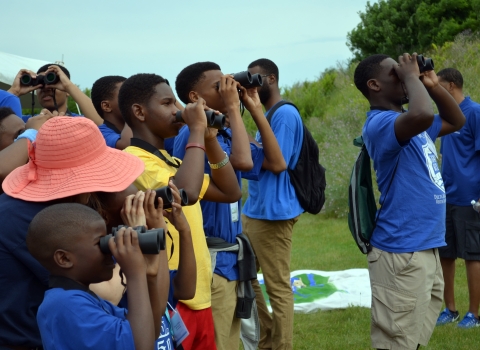As part of ongoing efforts to conserve the endangered black-footed ferret, the U.S. Fish and Wildlife Service, coordinating with multiple Native American Tribes and the Arizona Game and Fish Department, finalized a rule expanding the reintroduction of experimental populations of the ferret to much of the northern and southeastern parts of Arizona, including Tribal lands. The new rule will make it easier for volunteer landowners and managers to host ferrets on their property.
"One of the most endangered mammals in North America received a boost today thanks to the flexibilities built into the Endangered Species Act, such as section 10(j), that continue to be instrumental in achieving recovery goals for listed species,” said Southwest Regional Director Amy Lueders. “The visionary, innovative, and determined actions taken by our Service team members; Tribes; federal, state, and local governments; conservation organizations; and private citizens continue to make the recovery of the black-footed ferret possible."
The biggest threat to ferret recovery is plague, which the 10(j) rule in Arizona will help to address by facilitating the establishment of additional suitable reintroduction sites. Congress added the provision for “non-essential, experimental” populations under section 10(j) of the ESA. The 10(j) designation increases flexibility and discretion in management through special regulations allowing incidental take of black-footed ferrets, provided the take is unintentional and not due to negligent conduct. Use of the 10(j) rule will help address concerns that reintroductions may restrict the use of private, Tribal, or public lands.
The flexibility provided by 10(j) rules allowed the Service to reestablish black-footed ferrets in Arizona in 1996 and at 11 other sites throughout the ferret’s former range. Although specific new reintroduction sites in Arizona have not been selected, there are several potential sites on private, state, Tribal, and federal lands. With the special allowances under the 10(j) rule, landowners will be able to manage their property without concern they might break the law by inadvertently harming a ferret.
“The rule also demonstrates the Service’s commitment to Tribal sovereignty and fulfilling our trust responsibility to assist Tribes with managing their natural resources while working in the spirit of co-stewardship and cooperation to recover species,” said Service Field Supervisor Heather Whitlaw. “The Hualapai Tribe and Navajo Nation are instrumental partners in ferret recovery in Aubrey Valley, and their continued support, along with the Hopi Tribe, was essential to finalize the new 10(j) expansion and increase opportunities for species reintroduction within its historic range.”
Today’s announcement comes as the ESA turns 50 years old in 2023. Throughout the year, the Department of the Interior will celebrate the ESA’s importance in preventing imperiled species extinction, promoting wildlife recovery, and conserving the habitats they depend on. The ESA has been highly effective and credited with saving 99% of listed species from extinction.



